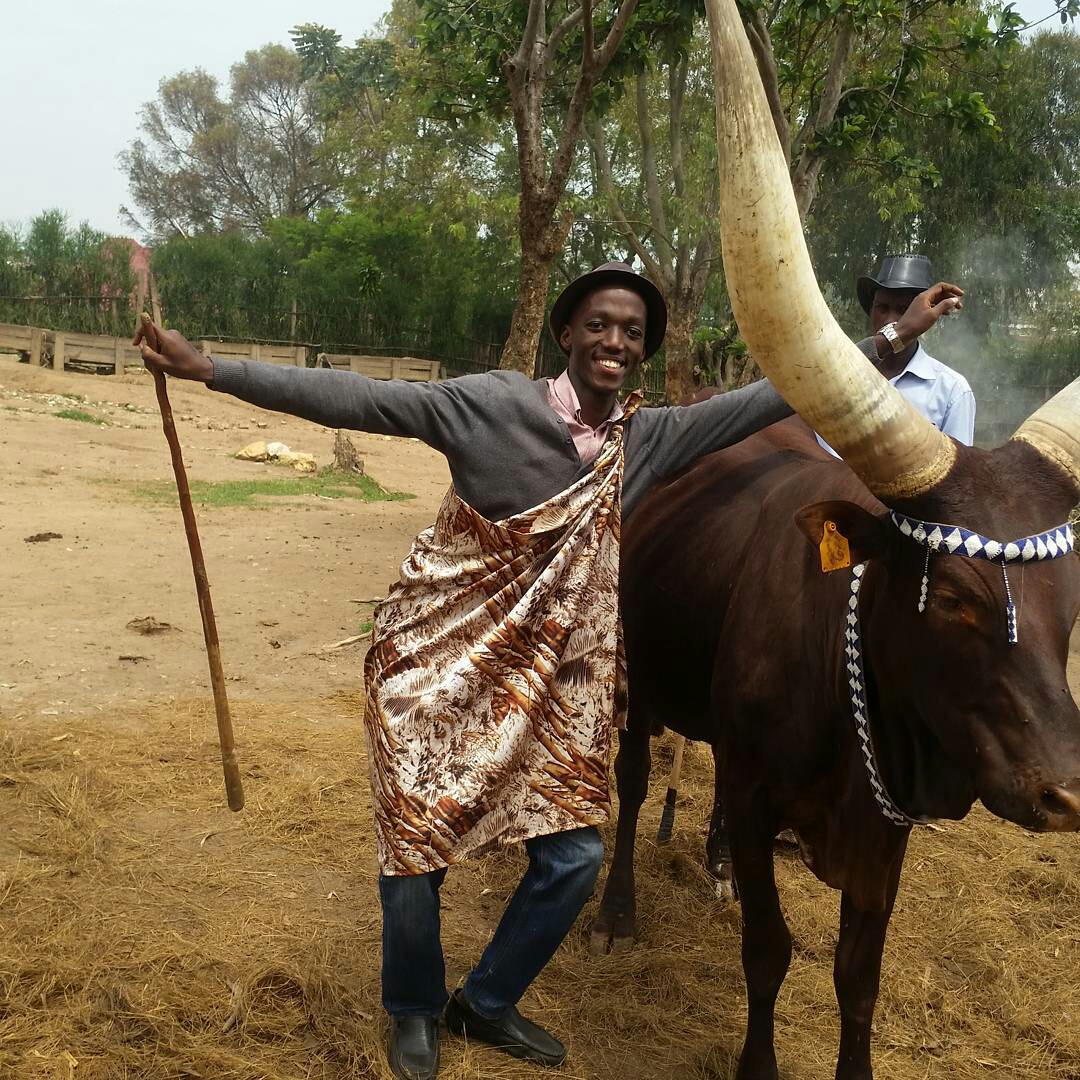THE BEAUTY OF RWANDAN CATTLE
By Our Reporter
In the heart of East Africa, where emerald hills roll under a cerulean sky, Rwanda’s beauty transcends the breathtaking landscapes. It unfolds in the rhythmic clanging of cowbells, the soulful hums of herders, and the majestic gait of the Inyambo – the long-horned cattle that have roamed these lands for centuries. More than mere livestock, these magnificent beasts are living tapestries woven into the very fabric of Rwandan culture, their history etched in tradition, their beauty an ode to resilience and harmony.
The story of the Inyambo predates recorded history, whispered through generations in tales as ancient as the Virunga Mountains that cradle Rwanda. Some believe they descended from the mythical Ankole longhorn, their lyre-shaped horns echoing the celestial harp of Ruganzu, a revered ancestral king. Others trace their lineage to Egypt, the horns echoing the sun god Ra’s rays. Regardless of their origin, the Inyambo became intertwined with the Rwandan way of life, their coats mirroring the lush grasslands, their strength mirroring the indomitable spirit of the people.
Rwandan folklore and traditions echo with reverence for these cattle. They are depicted in ancient cave paintings, a testament to their enduring presence throughout Rwanda’s history. For centuries, these cattle have been revered as a symbol of wealth and social status among Rwandan communities. The number and quality of a family’s cattle were once indicators of their prosperity and influence.
Moreover, these cattle played a pivotal role in Rwandan rituals and ceremonies. Inyambo cows were adorned and paraded during royal celebrations and cultural events. Their striking appearance, characterized by gracefully shaped horns and sleek coats, added grandeur to these occasions and symbolized the nation’s pride and heritage.
The significance of Rwandan cattle extends beyond mere aesthetics; they are an integral part of the country’s agricultural landscape, providing sustenance through dairy products like milk and ghee. Additionally, their dung serves as valuable fertilizer, contributing to Rwanda’s agricultural productivity. The dung is also used as a medium in an art form known as imigongo, which is made using fine cow dung. Other uses include the making of winnowing trays, beer pots and plastering floors and walls in traditional architecture.
However, the dark clouds of colonization and conflict threatened to sever this ancient bond. The introduction of cash crops and Western agricultural practices pushed the Inyambo to the margins, their traditional grazing lands fragmented and reduced. The Rwandan genocide against the Tutsi in 1994 inflicted another devastating blow, with countless Inyambo slaughtered or scattered in the chaos. Conflicts and diseases posed severe challenges to the preservation of Rwanda’s cattle heritage, leading to a decline in their population and genetic diversity.
In recent years, the resurgence of interest in preserving indigenous breeds has revitalized the appreciation for Rwandan cattle. Conservationists, historians, and communities have united to ensure the survival and flourishing of these iconic animals. Their conservation not only safeguards a breed but also preserves a cultural legacy deeply embedded in Rwandan identity. In the aftermath of the genocide, theGirinka Munyarwanda project facilitated the return of Inyambo to families, empowering them with a source of income and sustenance. Traditional practices were revived, Gushore rekindled, and the rhythmic clanging of cowbells once again echoed across the hills, a poignant song of healing and hope.
The allure of Rwandan cattle transcends their physical beauty; it embodies resilience, heritage, and the spirit of a nation that cherishes its traditions. As Rwanda continues to evolve, these majestic creatures serve as a poignant reminder of the country’s rich past and a beacon guiding its future. Their significance as cultural landmarks remains steadfast, symbolizing the unity and pride of the Rwandan people.
Cattle were not mere possessions; they were symbols of wealth, prestige, and social standing. Owning a large herd signified prosperity, granting one a voice in community decisions. The size and shape of the horns held particular significance, with symmetrical, long horns considered the epitome of beauty and a mark of a prized animal. The annual Gushore ceremony, a week-long celebration of milk and meat, showcased the finest Inyambo, their gleaming coats polished, their horns adorned with beads and bells, their rhythmic procession a display of community pride.
Beyond wealth and status, the Inyambo were an integral part of daily life. Their milk, rich and nourishing, sustained families, forming the base of countless dishes and fueling generations. Their dung nourished the land, ensuring bountiful harvests. Even their hides, transformed into tools and clothing, whispered tales of their utility and connection to the natural world.
Today, the Inyambo stand as a beacon of cultural revival. Their presence in bustling Kigali, adorned with colorful blankets and grazing on meticulously tended patches of green, speaks to their enduring significance. Artists sculpt their image into clay and wood, their horns adorning traditional architecture. Poets weave tales of their grace and power into verses, ensuring their history is not forgotten.
In a world increasingly homogenized, the Inyambo stand as a testament to the beauty and value of cultural diversity. Their story is not just about cattle; it is a story of resilience, of the intertwined bonds of people and nature, and of the unwavering spirit that defines a nation. It is a story etched in every curve of their majestic horns, in every clanging of their bells, a story that whispers, “Remember us, for we are Rwanda, and Rwanda is us.”
So, the next time you encounter these magnificent creatures, let their gaze transport you to the verdant hills of Rwanda. Listen to the stories their bellowing tells, of ancient kings and resilient communities. And remember, in the quiet clanging of their bells, lies a symphony of beauty, resilience, and hope, an ode to the Inyambo, the beating heart of Rwandan culture.


Leave a Reply